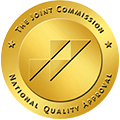Eye movement desensitization and reprocessing is an evidence-based therapy that’s proven effective for treating trauma, depression, substance use disorders and other mental and behavioral health issues. Before starting EMDR, you may have many questions about what to expect along the way. Let’s explore the structure of an EMDR session and the potential outcomes that make this therapy a powerful healing tool.
The Fundamentals of EMDR
Developed in 1987 by psychologist Dr. Francine Shapiro, EMDR operates on the premise that specific eye movements can diminish the intensity of negative emotions. During an EMDR session, your therapist will guide you to revisit traumatic or triggering experiences while simultaneously directing your eye movements. The therapy may also include auditory cues or tactile stimuli such as hand-tapping to aid the process.
These rapid side-to-side eye movements mirror the patterns observed during the REM sleep cycle – a phase when your brain actively processes experiences. By mimicking this process while awake, you can process a high volume of information, fostering healing from psychological distress.
Your therapist will pause after each set of eye movements to ask you to share your thoughts or feelings. If you notice shifts in your sentiments or cognitive responses, it signifies that reprocessing is taking place. Over several sessions, EMDR can help reframe your response to distressing thoughts or memories, lessening their emotional impact.
How to Prepare for EMDR Therapy
While EMDR has demonstrated its effectiveness with fewer risks than most pharmacological interventions, the therapy can intensify your awareness and perceptions. Some people report experiencing vivid dreams or feeling heightened sensitivity following their sessions. If you have similar experiences, your therapist can recommend relaxation techniques and self-care strategies to help manage these side effects.
The initial sessions could prove challenging, as they require confronting deeply rooted emotions like fear, guilt or sadness. Still, staying the course can help you learn to deal with complex feelings, guiding you toward a healthier, happier life.
What to Expect on Your EMDR Journey
EMDR therapy isn’t time-bound; instead, it concludes when you feel empowered to break free from the chains of your past adversities. Each session typically lasts between 60 and 90 minutes.
Before starting therapy, talk to your therapist to familiarize yourself with the process and build a rapport. The therapist will delve into your past to understand how your experiences have informed your present emotional distress. Honesty is crucial here – being open about any persistent negativity can pave the way for a transformative healing process.
After completing EMDR therapy, you should notice a decrease in your stress and anxiety levels, accompanied by a more positive life outlook. EMDR equips you with the tools to transcend trauma, reclaim control over your life and embrace a brighter future.
At Canyon Crossing, we support women on their path to healing. If you believe EMDR could be beneficial for you, or if you’d like to learn more about our women’s-only treatment center in Prescott, AZ, please get in touch with our team. We can help you discover a new, fulfilling lifestyle without addiction or mental illness holding you back.



